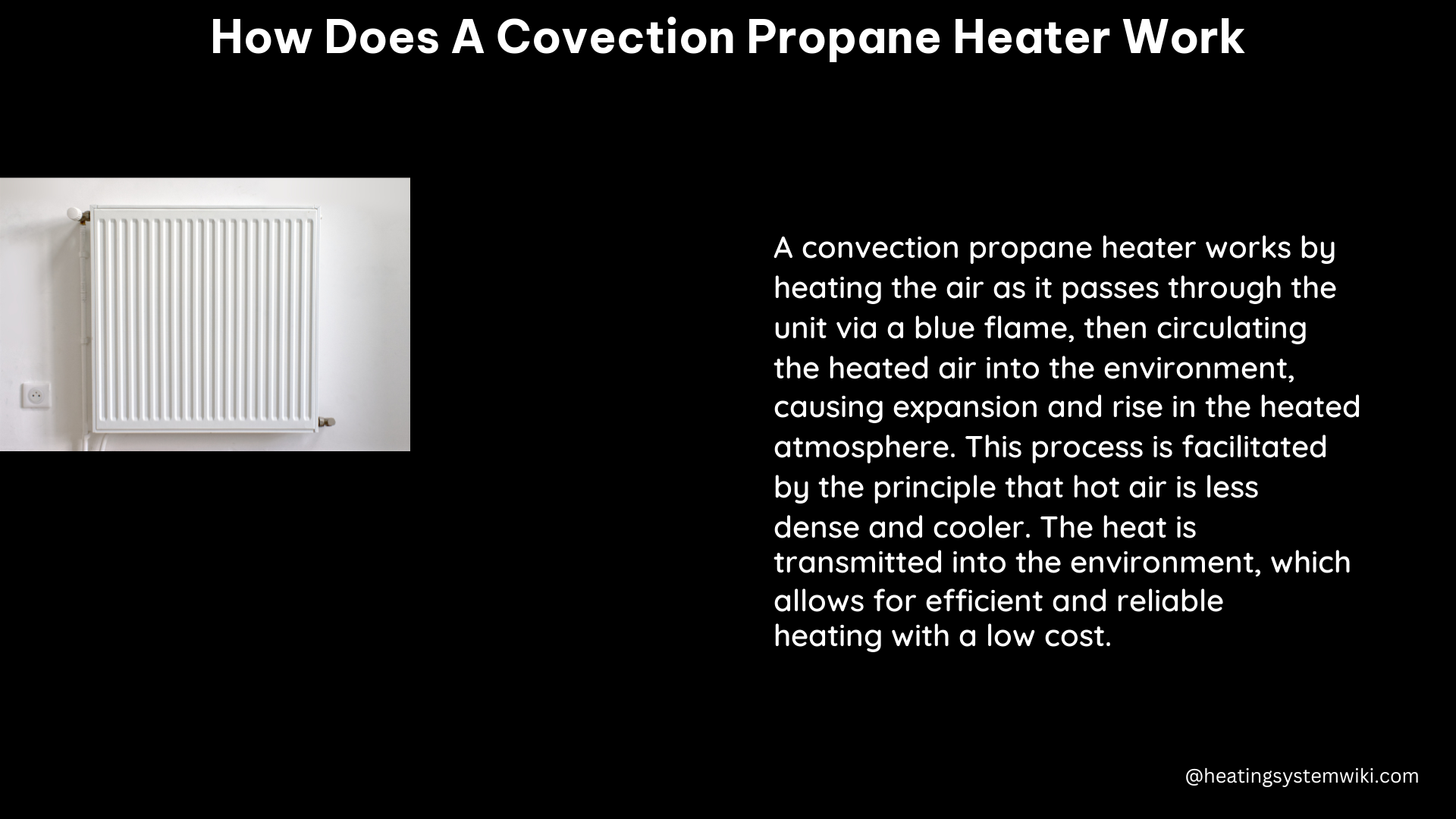A convection propane heater is a type of heating appliance that utilizes the principles of convection to efficiently distribute heat throughout a room or space. This comprehensive guide will delve into the intricate workings of a convection propane heater, providing you with a detailed understanding of its mechanisms, features, and installation considerations.
The Convection Process
At the heart of a convection propane heater is the convection process, which is responsible for the efficient distribution of heat. This process works as follows:
-
Heating the Air: The propane-fueled burner within the heater heats the surrounding air directly. This is achieved through the combustion of propane, which generates a significant amount of heat.
-
Air Circulation: As the air is heated, it becomes less dense and begins to rise. This creates a natural air circulation pattern, where the heated air rises and the cooler air from the surrounding environment is drawn in to replace it.
-
Heat Dissipation: The heated air circulates throughout the space, transferring its thermal energy to the objects and surfaces it encounters. This process continues until the entire room or area reaches the desired temperature.
Key Features of Convection Propane Heaters

Convection propane heaters come equipped with a range of features that enhance their performance and safety. Some of the most common features include:
-
Adjustable Heat Settings: Most convection propane heaters offer multiple heat settings, allowing users to precisely control the amount of heat output based on their needs. This feature enables efficient energy usage and personalized comfort.
-
Safety Shut-off Mechanisms: Convection propane heaters are designed with various safety features, such as automatic shut-off mechanisms that activate in the event of tipping, oxygen depletion, or overheating. These safeguards help prevent potential hazards.
-
Portability and Mounting Options: Convection propane heaters can be either portable or designed for permanent installation. Portable models offer the flexibility to be moved from one location to another, while wall-mounted or freestanding units provide a more permanent heating solution.
-
Fuel Efficiency: Propane is a highly efficient fuel source, and convection propane heaters are designed to maximize the heat output while minimizing fuel consumption. This translates to cost savings and reduced environmental impact.
Technical Specifications and Considerations
When selecting a convection propane heater, it’s essential to consider the technical specifications and ensure compatibility with your specific needs and installation requirements. Some key factors to consider include:
-
BTU Output: The BTU (British Thermal Unit) rating of a convection propane heater determines its heating capacity. Higher BTU outputs are suitable for larger spaces, while lower BTU ratings are more appropriate for smaller rooms.
-
Fuel Consumption: The propane consumption rate, measured in pounds per hour (lbs/hr), is an important factor in determining the ongoing operating costs and runtime of the heater.
-
Dimensions and Weight: The size and weight of the convection propane heater will impact its portability, installation requirements, and the available space in the intended location.
-
Ventilation Requirements: Proper ventilation is crucial for the safe operation of a convection propane heater. Ensure that the installation adheres to the manufacturer’s guidelines and local building codes.
Installation and Safety Considerations
Proper installation of a convection propane heater is essential for its safe and efficient operation. It’s recommended to follow the manufacturer’s instructions carefully and, if necessary, consult with a licensed professional. Some key installation and safety considerations include:
-
Placement: Identify a suitable location for the heater, ensuring adequate clearance from combustible materials and proper airflow for efficient heat distribution.
-
Fuel Supply: Ensure a secure and properly sized propane fuel supply, with the appropriate regulator and hose connections.
-
Ventilation and Exhaust: Provide proper ventilation and exhaust systems to ensure the safe removal of combustion byproducts, such as carbon monoxide.
-
Electrical Connections: If the convection propane heater requires an electrical power source, ensure that the connections are made in accordance with local electrical codes.
-
Ongoing Maintenance: Regular maintenance, including cleaning, inspections, and fuel system checks, is crucial for the long-term performance and safety of the convection propane heater.
By understanding the intricate workings of a convection propane heater and following the recommended installation and safety guidelines, you can ensure the safe and efficient operation of this versatile heating appliance.
References:
- Portable Propane Convection Heaters – YouTube
- Radiant or convection propane heater – Arborist Forum
- What Is a Convection Heater and How Does It Work? – Aire Serv
- Propane Heater Safety: Tips for Proper Use – The Family Handyman
- Convection Heater vs. Radiant Heater: What’s the Difference? – The Spruce
